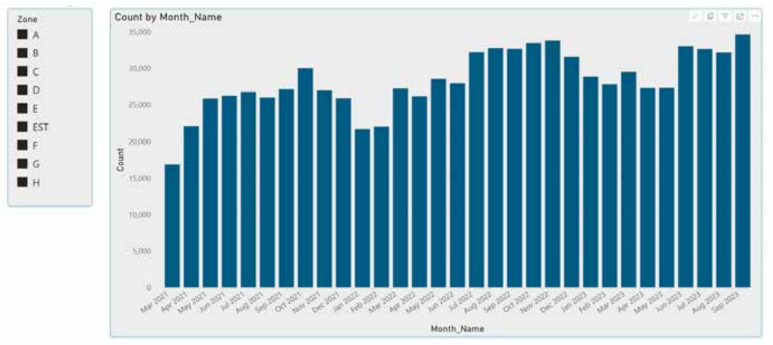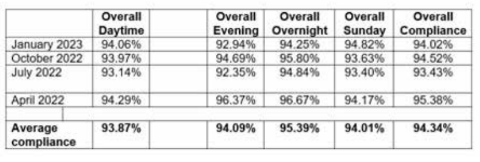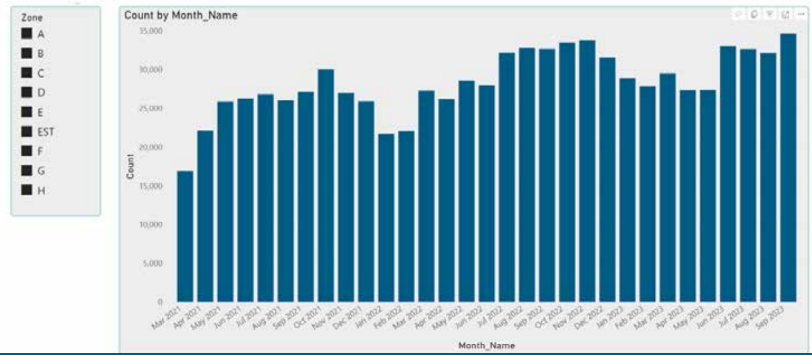Introduction
The Intelligent Led Deployment model is a service that NSL designed and mobilised
successfully in 2019 with the City of Westminster. There are benefits for other local authorities to follow this approach in ensuring Civil Enforcement Officers (CEO) are deployed to the
correct areas enforcing non-compliant vehicles, whilst also maximising revenue from Paid for
Parking bays, whether through Permit or Pay and Display parking.
NSL can support local authorities in improving the effectiveness of their parking enforcement
through Intelligent Led Deployment.
Backround
To benefit fully from our Intelligent Led Deployment model, NSL would require access to all
the following Management Information (MI), for a minimum of a 12 month period:
- Penalty Charge Notice (PCN) issuance by street, zone, time and days of the week.
- Pay and Display and Cashless data by street, zone, time and days of the week.
- Permit data by zone, including number of permits issued by vehicle type.
- Compliance data (if this is available).
- Details of any special enforcement requests (both continuous and one offs).
- CEO deployment information for the past 12 months, including deployed
- hours by day and hours of work.
The data supplied can come various data sources, including:
- PCN issuance back office system.
- Pay and display provider back office system.
- Cashless provider back office system.
- Permit provider back office system.
The process
We collate all of the data above into our Data Warehouse called Illuminat8. From this, we can
extract all required data into Power BI to help form an accurate deployment model. The most
valuable data we use in Westminster is drawn from historical PCN data and heat maps of Cashless
data, which will help determine the busiest areas in the City.
- We analyse the total number of PCNs issued in the borough in the previous months.

2. We then break this down by zone and calculate the proportion of PCNs issued in each zone to
calculate how many CEOs are deployed to each zone. In the case of Zone E below 8,431 PCNs were
issued in the month of September 2023, the total number of PCNs issued in September across the
borough was 34,639, therefore in October we will deploy 24% of the total resource to this particular
zone.

3. Once we know what resource is being dedicated to each zone we can then break down
the total PCN count by street.
The table below shows the busiest streets in Westminster in terms of PCNs issued by month

This can then be broken down by zone as seen below. From here, CEOs are provided
information on which streets within each zone they should visit and how many times a day
they should visit.

5. Each street in each zone is visited at least once per day, however the busiest streets will
have at least four visits per day and in the case of Queensway will have a dedicated resource
during all operational hours based on the sheer volume of PCNs issued and the compliance
issues within the street.
6. As well as all of the PCN data we also use heat maps of the Cashless transactions that take
place within the borough.
The map below illustrates the area around Mayfair with the bigger circles have greater
numbers of transactions. This suggests that the demands on parking space are even greater
and therefore the risks of vehicles parking in contravention are far greater and therefore
these streets are visited on more frequent basis.

7. From all the data gathered we will then form a deployment plan by day of the week and
times of the day.
8. In addition to the data above we also analyse data from the quarterly compliance visits that
are conducted by an independent consultant across the borough; our average
compliance across the borough is 95%.
The table below illustrates the compliance surveys the 12 months between April 2022 and
April 2023. If we see a downward trend in levels of compliance then we will adjust the
numbers of CEOs to each zone. We also use this data and compare this to the number of
PCNs issued.
If we see a case where the number of PCNs issued is increasing but compliance is decreasing
then we will put a business case forward to the Council to increase the number of
deployed hours.

The impact
In the four years that we have been using Intelligent Led Deployment we have seen the
number of PCNs issued increase from 24,000 per month to over 34,000 per month and the
trends show a continual upward trajectory. This is in stark contrast to the majority of local
authorities who are seeing the numbers of PCNs issued declining year on year.

The benefits
By using the Intelligent Led Deployment model we can adjust our deployment accordingly
based on factual and historical data. This has the following benefits:
- Providing the client with assurances that we are delivering value for money ensuring we
- have the right people, in the right place at the right time.
- We are helping support enforcement on the increasing demands on kerb space and in
- turn are helping keeping traffic moving in the centre of the capital.
- We can flex our deployment based on the data provided, either by zone, time of day or
- days of the week.
- We are increasing the Councils overall revenue streams for enforcement, paid for
- parking, permits and suspensions.
Go live
Once agreed with all parties we will then be able to assemble a fully trained Management
Information team who can interrogate all the relevant data sources and provide the on-street
teams with the relevant data to improve the overall effectiveness within the local authority
area.

